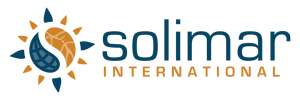Destination Arctic Circle in Greenland, a destination marketing organization supported by Solimar, produced a new social media video campaign to set their destination apart from other arctic locations.
When I ask people what they think of when they think of Greenland, they inevitably say something like “volcanoes” or “Bjork” – both of which belong to Iceland. For some reason (geographic proximity? identical suffixes?), Greenland gets assigned Icelands assets and liabilities all the time, even by discerning and experienced travelers.
Because of this, raising brand awareness has always been a priority of the national Greenlandic tourism board (Visit Greenland ), as well as the four regional tourism boards.
This month, I spent a few weeks up in Greenland working with one of the regional tourism boards, Destination Arctic Circle (DAC), on the second phase of a project called Rough.Real.Remote. These three words are the tag-line for the brand of DAC ,which was designed in 2010 to shift the tourism narrative away from outdated elements that were resulting in unrealistic tourist expectations (igloos, Inuits, etc.) and toward the true modern, arctic life that tourists actually encounter when visiting Greenland today.
Once this brand was articulated, DAC had to decide how to effectively (and cheaply) bring it to life. The chosen medium was video, and in April 2011, we created six short films for social media that focused on winter tourism products.
The videos accomplished what we had hope: they delighted stakeholders and captured the imagination of tourists. So this year, we started working on Phase 2 – six short films about summer products; only with a solid proof of concept from last year, we were able to pull in more sponsors and collaborate with Red Bull who sent Petr Kraus , a World Champion trial biker (a trial biker, as I learned, is a biker that jumps over stuff, often very big stuff) to star in the videos.
The focus of summer products (kayaking, hiking on the icecap, visiting settlements, biking, and fly-fishing) will hopefully inspire tourists in the destination awareness stage and inform those in the planning stage, as well as connect them to operators offering these products. As for the sharing stage, we found last year that people who hadalready visited the destination shared our videos after the fact with posts like “I’ve been there!” And as it did last year, we hope it will also engender pride in stakeholders.
Being behind the scenes of the filming really opened my eyes to the work required to produce high quality content in the wild. We had two videographers who have extensive experience in Greenland. MMP used a Red Camera, which was treated far better than any human member of the team, you can imagine what this means for 10km treks over the ice! Fragile as it was, the Red wasn’t allowed out in the rain – of which we had several days – requiring us to quickly adapt our plans. I also learned that good light appears at ungodly hours like 4:30 a.m.
The Red’s raw footage is stunning – and its clear to me that destinations can’t rely exclusively on user-generated content for their online videos, rather UGC needs to be complimented with authoritative, beautiful and professionally produced films – to show the destination at its best. Furthermore, you don’t need a Turismo Mexico budget to pull this off – you need stakeholder buy-in (and in-kind donations) and excellent producers who already understand the destination and its conditions.
Although created for social media, we hope the films will be so good that they will be used in other places, such as on board Air Greenland and in hotel rooms. But ultimately, the goal is to ensure that instead of being lumped in with Iceland, these videos will help people have an accurate picture of Greenland today – a place of endless beauty, challenging adventures, breathtaking wilderness and resilient and resourceful people living in an arctic climate.
